Guest blogger Mickey Bond conducted interviews with two artists on the importance of organization, discipline and balance in their professional lives. Here’s their best advice on how to flourish.

“It’s official: we can accomplish more and go farther if we dedicate ourselves to written goals,” writes Angelo Kinicki, textbook author and speaker on organizational behavior. Research shows that goal setting is “a very powerful technique to improve individual productivity…”
January is a great time to assess what did and didn’t work for us as artists. “I separate my New Year goals into three artistic categories: craft, creation and career,” explains master pastel painter Richard McKinley who blogs weekly for the Pastel Journal Magazine where his “Pastel Pointers” has appeared since 2007. He likens the goal-setting process to “stepping back from the easel” so as not to get “lost in the minutia.”
Naturally, creative people have creative ways of organizing their time. And there are as many ways to organize an artistic life as there are artists. Personally, I see myself as an out-of-the box person. Yet I’ve learned the hard way that if I don’t set up boxes constructed and fortified by categories, goals and deadlines, I won’t accomplish much. I seem to need those boxes to work against. That struggle spurs my creativity to make art and set achievable goals to further my career.
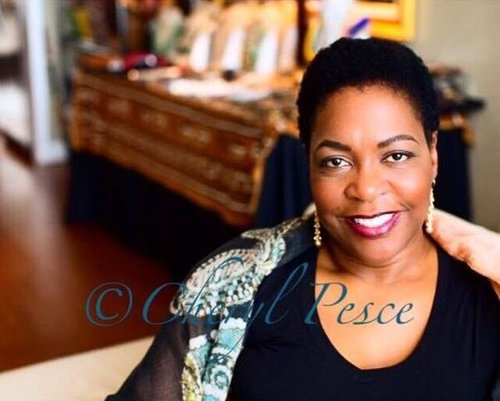
Some artists seem made for disciplined routines. “I make something new and different and wonderful every single day. And I’m making a living at it,” says Memphis-based artist Cheryl Pesce, owner of her own jewelry design company. “For two hours early each morning, I take out my tools and do something with them. Then I put everything away. I’ve had to learn to discipline myself.” Pesce has a small live/work space. “I have a rule,” she confides “I don’t bring jewelry to the second floor.”
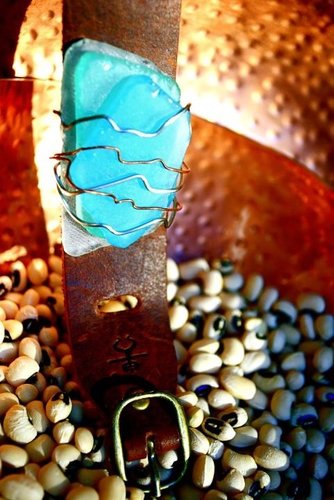
Pesce is one of those people who never looks at or needs a clock at any time of day. She wakes up naturally raring to go at 4:30 a.m. “I have a cart in my studio where I store all my chains and findings. So on any given morning, after about an hour or so on social media, I’ll roll the cart up to my work bench with my coffee, some chains, some stones, and create pieces for 2-3 hours before 8 a.m.” As to her daily dose of social media, “Facebook, Instagram and Twitter. That’s seven days a week. It’s a great way to start my morning, and get my mind focused on the day.”
Her yearly organizational plan follows retail buying trends. “I make more jewelry in August when a lot of people aren’t buying as much,” explains Pesce. During the first quarter of the year, Pesce travels to gather materials for her jewelry. The second quarter finds her more often in the studio making jewelry and acquiring new clients. During the last quarter of the year, Pesce conducts trunk shows and other recurring sales events.
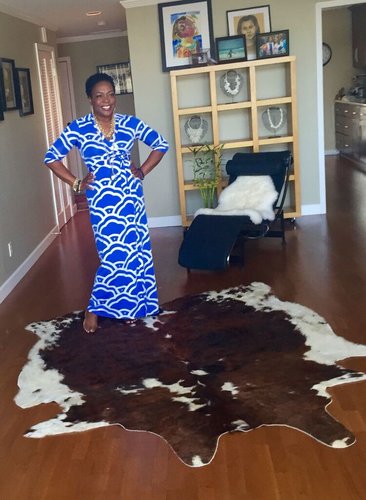
MB: Imagine yourself balancing the many elements of your life including art, work, family, travel, etc. What do you see?
CP: I see a wheel with spokes coming from the center. I’m at the center, and all the spokes divide the wheel in sections that represent my life’s responsibilities: my art, my family, my friends, my community, my religion. In a perfect world, each section of the wheel would be equal, and the wheel evenly balanced and running smoothly. But because that’s rarely the case, my wheel doesn’t turn evenly and I have to work carefully to keep it balanced.” Muses Pesce, “There is a theme of wheels in my life, and nature is my color wheel. I coordinate my colors, stones, and designs based on the way plants and flowers are naturally painted.”
MB: What is your takeaway message regarding goals and the structuring of an artistic life?
CP: I’d like to stress the importance of getting out there. Don’t miss opportunities to meet people. Make meeting people and networking one of your daily and yearly goals, and part of your routine as an artist. When I schedule a trunk show, my first thought is not the money I might make but my commitment to show up ready to go. Things happen organically, and I’ve met the most loyal customers at some of those shows. But nothing can happen if you don’t show up.”
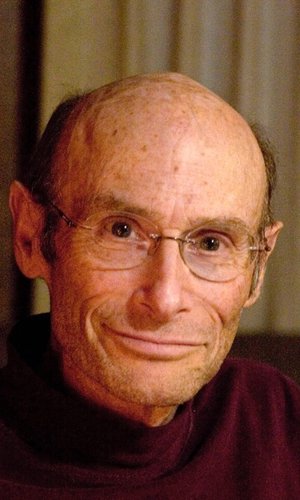
In San Luis Obispo, semi-retired sculptor Carl Berney plans his days according to the best hours of sunlight. He likes to work outdoors. “I work in the studio three or four hours a day about three days a week,” Berney told me on the phone. ” I pick my studio time when the light is best, because I need even light to work well in three dimensions. My best hours right now are mid-afternoon to sometime in the evening.” Berney hopes to work outdoors year round in California and plans to put a roof on his outdoor shed.
Berney loves everything about stone. “It’s a demanding medium, both physically and mentally,” he admits “but it’s exhilarating when you enter the stone and let it guide you to the final form.”
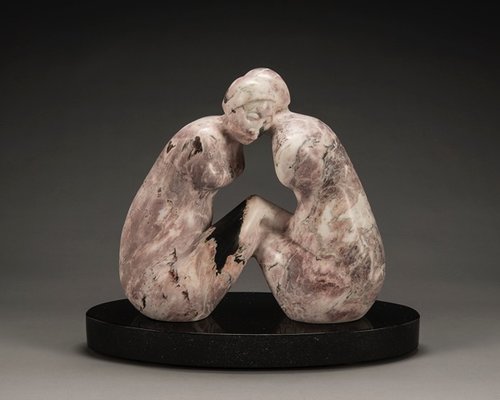
As to goals that help organize his artistic life, Berney acknowledges that his approach has changed over the years. “I’ve downsized as an artist, concentrating on smaller pieces for my own enjoyment, rather than larger pieces and making money, though I still show in galleries,” he told me.
“My approach to my work and how I organize my life has always been linear. When I’m working on a piece, I don’t think about the next one until I’m halfway through the one I’m working on. Then I begin to imagine and think about the next piece. And I may do some research or some sketches. Sometimes if I’m stuck on a piece I’m working on, I’ll take a break and go back to a sculpture I may have left unfinished for years. ”
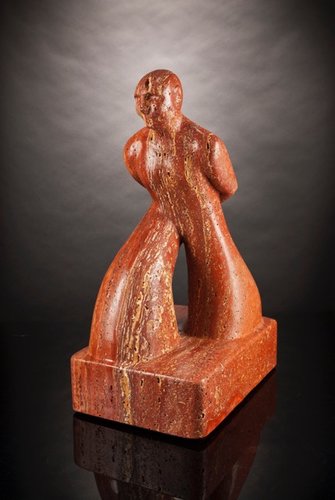
MB: What does your “linear” organizational model look like?
CB: I see a white space containing a long dashed line moving away into space. Individual dashes in the line are of varying length and spaced unevenly with some dashes closer together and others farther apart.
MB: What is your takeaway message for folks regarding goals and the structuring of an artistic life?
CB: Just do it! Go out and make something, because the act of creation is what is truly important. Good or bad, for sale or not for sale, doesn’t matter. Creating something is our highest evolutionary achievement and creativity marks us out from other species. It is what we are meant to do as people.
If you want great financial success as an artist, you’ll need to spend at least 50% of your time marketing your work. In the business world, nothing matters but the sale. The quality of your artwork is not nearly as important as your success in marketing it. Making art and the business of art come from two different skill sets and most artists lack those business skills.
In structuring his life as an artist, Berney sets great value on controlling his own time. “I discourage commissions, ” Berney told me. “I prefer my own internally motivated deadlines. Working for someone else is a commitment to another person’s sense of style and design and another person’s schedule, ” he added.
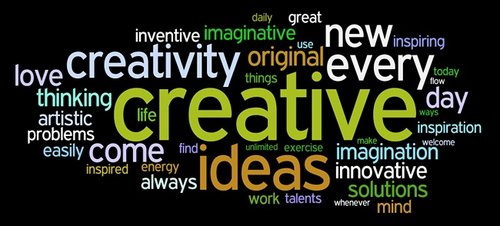
There is a tendency each January to get carried away with our resolutions and goals, imagining how much better we will be in the coming months. It is far better to set realistic goals that can be met through specific actions.
Chris Bailey, author of the Productivity Project, suggests that to be more creative, people should set “process goals” not “culmination goals.” Writes Bailey, “A process goal is what you will actually have to do to achieve a larger goal. For example, instead of setting a goal to win a boxing title, you might set a goal to keep your hands up throughout an entire boxing match. Process goals will make you a lot more likely to achieve your creative (and larger-scale) goals.”
My takeaway? However we envision or organize our artistic lives, it is important to make goals, write them down and evaluate them as we go along. Here are some productivity pointers:
- set goals down on paper
- choose goals that engage your passion
- talk to other creative people
- focus on the small steps of your journey
- track measurable goals
- practice routines that build discipline
- make goals time sensitive
- work diligently and persevere
- change goals to match new opportunities
- evaluate success and failure without bias
Mickey Bond creates energetic abstract paintings in acrylic using found-object resists and experimental media such as coffee. She is curator of themed shows and special events at the Jay Etkin Gallery in Memphis where she shows her work and teaches workshops in mixed media. Articles by Ms. Bond have appeared in Professional Artist Magazine.


Speak Your Mind